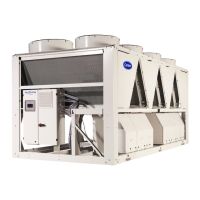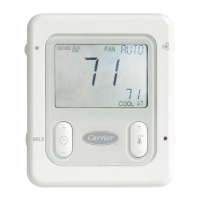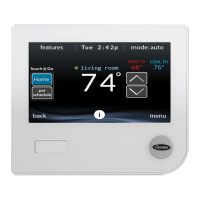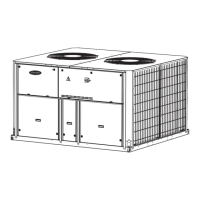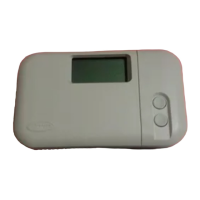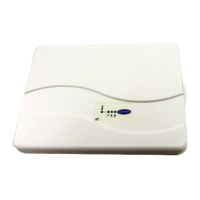33
6 - STANDARD CONTROL OPERATIONS AND OPTIONS
6.1 - Unit start/stop control
The unit state is determined based on a number of factors,
including its operating type, active overrides, open contacts,
master/slave conguration, or alarms triggered due to operating
conditions.
The table given below summarizes the unit control type [ctrl_typ]
and its running status with regard to the following parameters:
■ Operating type: This operating type is selected using the Start/
Stop button on the user interface.
LOFF Local o
L-C Local on
L-SC Local schedule
Rem Remote
Net Network
Mast Master unit
■ Start/stop force command [CHIL_S_S]: Chiller start/stop
force command can be used to control the chiller state in the
Network mode.
- Command set to stop: The unit is halted.
- Command set to start: The unit runs in accordance with
schedule 1.
■ Remote start/stop contact status [Ono_sw]: Start/stop
contact status can be used to control the chiller state in the
Remote operating type.
■ Master control type [ms_ctrl]: When the unit is the master
unit in a two-chiller master/slave arrangement, the master unit
may be set to be controlled locally, remotely or via network.
■ Start/stop schedule [chil_occ]: Occupied or unoccupied
status of the unit.
■ Network emergency stop command [EMSTOP]: If activated,
the unit shuts down regardless of the active operating type.
■ General alarm: The unit shuts down due to failure.
Active operating type Parameter status Result
LOFF L-C L-SC Rem Net Mast
Start/stop
force
command
Remote
start/stop
contact
Master
control
type
Start/stop
time
schedule
Network
emergency
shutdown
General
alarm
Control
type
Unit
state
- - - - - - - - - - enable - - o
- - - - - - - - - - - yes - o
active - - - - - - - - - - - local o
- - active - - - - - - unoccupied - - local o
- - - active - - - open - - - - remote o
- - - active - - - - - unoccupied - - remote o
- - - - active - disable - - - - - network o
- - - - active - - - - unoccupied - - network o
- - - - - active - - local unoccupied - - local o
- - - - - active - open remote - - - remote o
- - - - - active - - remote unoccupied - - remote o
- - - - - active disable - network - - - network o
- - - - - active - - network unoccupied - - network o
- active - - - - - - - - disable no local on
- - active - - - - - - occupied disable no local on
- - - active - - - closed - occupied disable no remote on
- - - - active - enable - - occupied disable no network on
- - - - - active - - local occupied disable no local on
- - - - - active - closed remote occupied disable no remote on
- - - - - active enable - network occupied disable no network on
IMPORTANT: When the unit is stopping or there is a demand
to stop the unit, compressors are stopped consecutively.
In case of emergency stop, all compressors are stopped at
the same time.
6.2 - Capacity control
The SmartVu
TM
control adjusts the number of active compressors
to keep the heat exchanger temperature at its setpoint. The
precision with which this is achieved depends on the capacity of
the water loop, the ow rate, and the load.
6.3 - Demand limit
The demand limit functionality is used to limit the unit power
consumption whenever possible.
The SmartVu
TM
control allows for limiting unit capacity:
■ By means of a user-controlled volt-free contact. The unit
capacity can never exceed the switch limit setpoint activated
by this contact. The limit setpoint can be modied in the
SETPOINT menu.
■ By setting the DEM_LIM value when the unit is in Network
mode.
■ By lag limit set by the master unit (master/slave assembly). If
the unit is not in the Master/Slave assembly, the lag limit value
is equal to 100%.
Capacity limitation is expressed in percentage, where a limit value
of 100% means that the unit may run with its full capacity
(no limitation is implemented).
Example: Switch-controlled demand limitation
(Switch Limit Setpoint in the Setpoint menu)
Switch Limit Setpoint [lim_sp1] Compressor control
100% 1 × 2 = 2 compressors Two compressors can be started
75% 0.75 × 2 = 1.5 compressor One compressor can be started
50% 0.5 × 2 = 1 compressor One compressor can be started
25% 0.25 × 2 = 0.5 compressor No compressor can be started
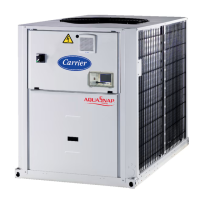
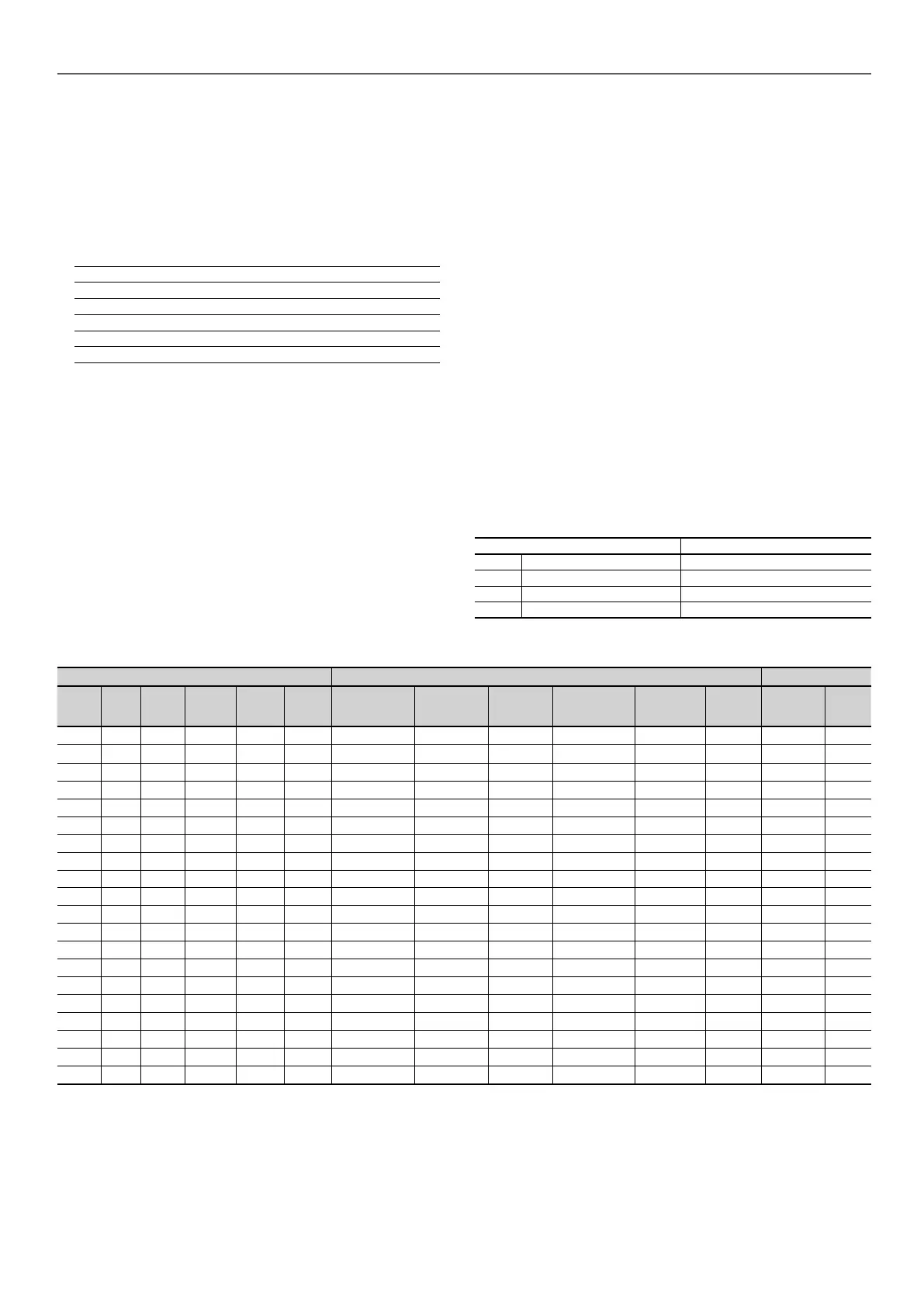